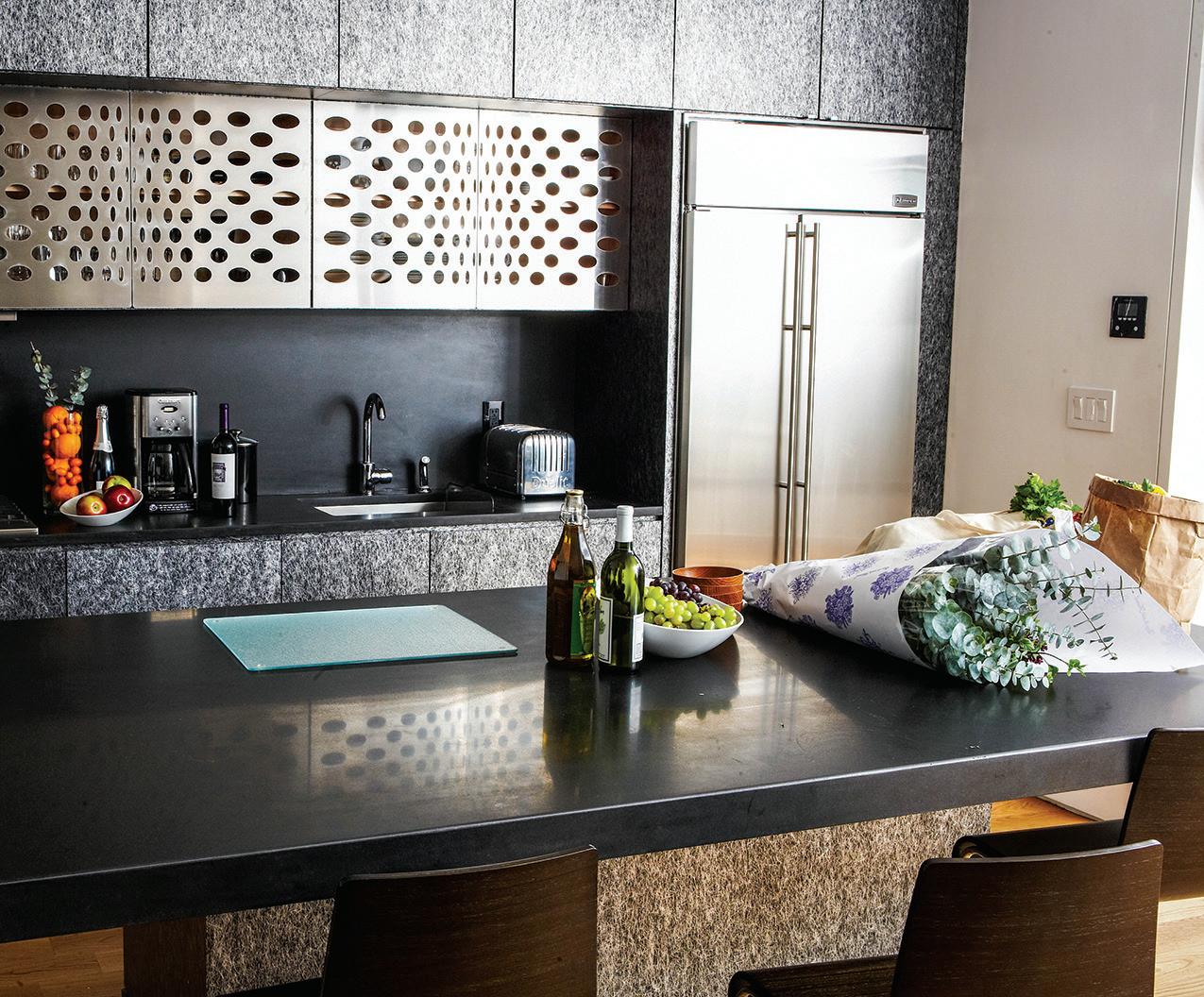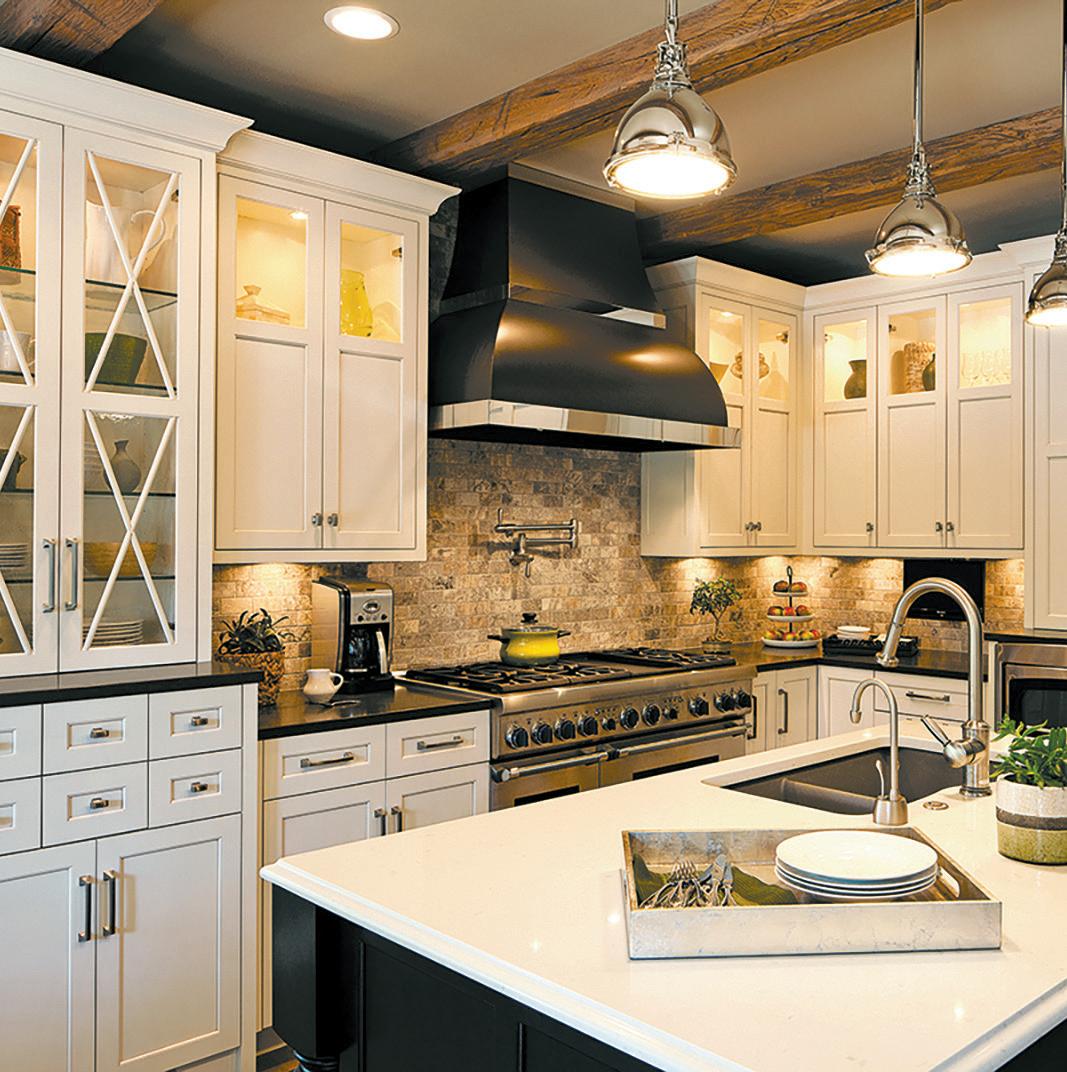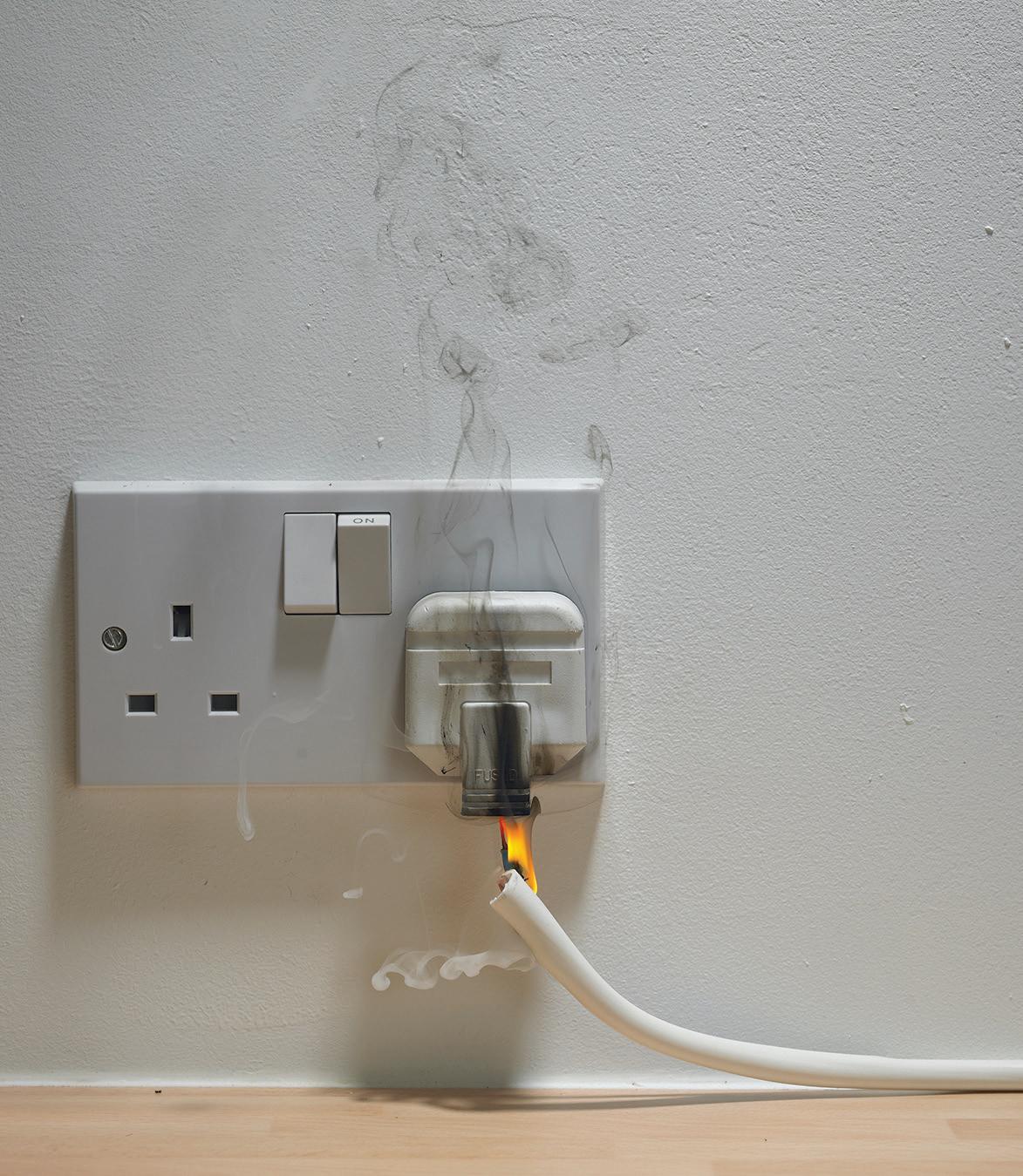
4 minute read
Small kitchen improvements that maximize functionality
Many homeowners wish for expansive kitchens. Modernized kitchens that include sought after features and showcase the latest trends go a long way to improving the overall value of a home.
As desirable as such kitchens may be, some homes simply don't have enough space for a centerfold-worthy kitchen featuring an island, wine refrigerator and walk-in pantry.
However, homeowners with small kitchens can still improve the form and function of their existing spaces.

Reconfigure And Revamp Cabinetry

Homeowners whose kitchens are small often lament their lack of storage. Redesigning the layout of cabinets, and possibly adding some more cabinetry, may take care of certain storage issues. Try utilizing corner space with LeMans units, lazy susans and other gadgets to make access to these areas easier. Going vertical with wall cabinets that extend to the ceiling also can add more storage, as can roll-in work carts.
Work With The Walls
Small kitchens require clever usage of vertical space. Vertical storage units, hooks, shelving, and more can move items out of drawers and off of counters. Consider an under-the-cabinet toaster oven and microwave to create more counter space.
USE SCALED-DOWN APPLIANCES
Shop with size in mind when looking at new appliances if you have a small kitchen. Compact versions won't take up as much space as larger wall plates

· Cracking, sizzling or buzzing from receptacles Burning odor coming from receptacles or wall switches space." Glass also can be reflective, visually expanding the space.

· Mild shock or tingle from appliances, receptacles or switches.


Learning to recognize the signs of overloaded circuits is an important step in making homes safe, as the NFPA notes that home fires contribute to hundreds of deaths and more than 1,500 injuries each year. Such fires also hit homeowners in their pocketbooks, causing an estimated $1.4 billion in property damage annually.
Prevention is another key component when safeguarding a home and its residents from fires sparked by electrical failures of malfunctions. The ESFI offers the following tips to prevent electrical overloads. Never use extension cords or multi-outlet converters for appliances.
· All major appliances should be plugged directly into a wall receptacle outlet. Only one heatproducing appliance should be plugged into a receptacle outlet at any given time.
· Consider adding new outlets to your home. Heavy reliance on extension cords indicates that your home does not have enough outlets. Bring in a qualified electrician to inspect your home to determine if more outlets are necessary.
· Recognize that power strips only add additional outlets; they do not change the amount of power being received from the outlet. Fires sparked by electrical circuit overload pose a significant threat. Thankfully, such fires are preventable. Learn more at www.esfi.org.

Modernized kitchens that include sought after features and showcase the latest trends go a long way to improving the overall value of a home.
EMBRACE HIGHEND MATERIALS alternatives. Homeowners should consider the ultimate function of the kitchen and then think about which appliances will serve them well. Homeowners with small kitchens may not need a large stand mixer or an oversized commercial stove.
ADD SOME GLASS
The DIY Network recommends incorporating glass to improve the perception of space in small kitchens. Glass lets you see through the objects, thereby enhancing the feeling of spaciousness or what designers call "negative ome ownership is a dream for many people. In fact, buying a home is considered by many people to be a major life accomplishment.
It costs less to renovate small spaces than bigger areas, so homeowners may be able to afford high-end materials that really add personality to a kitchen. Flooring, counter materials and quality fixtures can really set small kitchens apart. Small kitchens can be culinary havens with the right improvements to maximize the space.
Various factors determine what makes a home an attractive place to live. While some considerations may overlap, others may be unique to individual buyers. Those new to the real estate arena may want to consider the following factors as they search for a new place to call home.
1: PROPERTY TAXES
Property taxes can greatly affect the overall cost of living in a particular home. Property taxes are generally levied by each county and often include taxes paid to schools, utility companies and municipal governments. Property taxes will usually be factored into a monthly mortgage payment, and how high (or low) taxes are can turn an affordable mortgage payment into something that can break a budget. When calculating payments, be sure to include property taxes in your estimates.
“It’s also good to check into whether there are any upcoming communi- ty projects that will add assessments to your property taxes,” said Jamie Sathers-Day of JS Realty.

Those new to the real estate arena will want to consider many factors as they search for a new place to call home.

2: JOB SECURITY/AVAILABILITY
The financial resource Fortune Builder says to consider your job security before taking the home ownership plunge. Before committing to an investment as substantial as a home, ensure that you are secure in your job. Similarly, if you are relocating for job prospects, verify that the new location has a thriving job market.
“Buying a home is a long-term investment for most people,” added Julie Sathers of JS Realty, “so make sure you have a secure job and plan on being there for at least several years.”
3: LOCAL SCHOOLS
For potential homeowners with children or those planning on becoming parents, area schools should merit significant consideration. Research school rankings and reviews, but know that rankings can change. Look at the school budget history of towns you’re considering as well, to see if residents prioritize funding for education. This can be a measure of how important education is in a given community.
“You can also plan a visit to the school for a tour and to meet the principal and faculty” advised Jackie Sathers of JS Realty.
4: COMMUTE TIMES
Home ownership involves both lifestyle and financial decisions. Calculate the time it will take to travel to and from work when considering a certain town or neighborhood. Find out if there is mass transit and what options are available for off-hour travel needs.

5: LIFESTYLE OPTIONS
Quality nightlife, arts and history, community events, proximity to cultural centers or cities, and other factors are at play in choosing a home. Make sure your new community allows you to still enjoy the things you’re passionate about.




